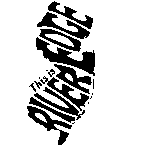When it comes to buying a house, there are numerous factors to consider, including whether to opt for an older property with its own unique charm and character. While older homes may hold a certain allure, it is essential to weigh the pros and cons before making a decision.
On one hand, older houses often boast distinctive architectural styles, a sense of history, and attractive locations in well-established neighborhoods. Additionally, they tend to come with a lower purchase price compared to newer counterparts.
However, there are drawbacks to be mindful of as well. Older homes may require more frequent maintenance and repairs, potentially requiring updates to outdated systems and compliance with current building codes. Moreover, modern amenities and technology may be limited in these older properties.
To delve into these pros and cons further, let's explore the unique charm and character, potential challenges and maintenance, location advantages, cost considerations, and availability of furnishings associated with buying an older house.
Key Takeaways
- Unique charm and character: Older houses often have distinctive architectural styles, vintage fixtures, and ornate woodwork, providing a sense of history and character.
- Potential for customization and renovations: Older houses offer the opportunity for customization and renovations, allowing buyers to personalize the space to their preferences.
- Higher maintenance and repair costs: Buying an older house may come with higher maintenance and repair costs due to the deterioration of materials over time and outdated plumbing and electrical systems.
- Historic preservation and tax incentives: Purchasing an older house contributes to the preservation of architectural and historical value, and may provide access to tax credits and incentives, increasing property value over time.
Unique Charm and Character
Older homes possess an undeniable allure, boasting unique architectural styles, craftsmanship, and design elements that add a sense of history and character to the property. This unique charm and character is one of the main reasons why many people are drawn to older houses when buying a home.
Unlike newer construction, older homes often feature distinctive details and design elements that are not commonly found in modern houses. From ornate woodwork and stained glass windows to intricate moldings and vintage fixtures, these architectural features can create a truly one-of-a-kind living space.
Owning a historic home also offers the opportunity to be a part of the preservation of local culture and heritage. Older homes can have historical significance, and by purchasing and maintaining one, homeowners contribute to the preservation of their community's history.
Moreover, the charm of an older home extends beyond its physical attributes. Living in an established neighborhood with mature trees and well-preserved homes can create a sense of community and belonging. Additionally, the curb appeal of older homes is often more pronounced, with their unique designs standing out in comparison to the uniformity of newer houses.
However, along with the unique charm and character comes the reality of maintenance costs. Older houses may require more upkeep due to wear and tear over the years. It is essential to consider the potential expenses of maintaining and restoring an older property when purchasing a historic home.
Potential Challenges and Maintenance
Maintaining and repairing an older house can present a range of potential challenges and expenses due to the aging construction and materials used in these properties. Buying an older house may come with a unique set of maintenance requirements that owners need to be prepared for. One of the main issues with older homes is the need for frequent maintenance and repairs. These houses were built using materials that may have deteriorated over time, requiring regular attention and upkeep.
Additionally, outdated or inefficient systems such as plumbing, electrical, heating, and air conditioning may need to be updated, which can be costly. Structural elements like chimneys may need realignment or draft excluders, while older windows may need replacement to improve energy efficiency. Another challenge with older homes is the limited availability of modern amenities and technology. Owners may need to invest in upgrades to comply with current building codes and regulations. These updates can add to the overall cost of owning an older house.
While the charm and character of older homes are appealing, prospective buyers should weigh these potential challenges and expenses carefully before making a purchase decision. Proper maintenance and regular inspections can help mitigate some of these issues, but it is important to be prepared for the additional costs that come with owning an older house.
Location Advantages
When considering the purchase of an older house, one of the key factors to consider is the location advantages it may offer. Older homes are often built closer to downtown, providing easy access to local shops, schools, and amenities. This proximity can be convenient for those who prefer a vibrant urban lifestyle and want to be near the heart of the city. Additionally, older homes may offer amenities within walking distance, even outside the city center, making it convenient for residents to access parks, restaurants, and other attractions without the need for a car.
Another advantage of buying an older house is the unique architectural charm that often comes with it. These historic homes can have a distinct character and style that sets them apart from newer constructions. The craftsmanship and attention to detail in these houses can create a sense of nostalgia and give homeowners a connection to the past.
Lastly, older homes are often located in well-established and desirable neighborhoods. This means that residents can benefit from a sense of community and a strong neighborhood identity. Additionally, older homes tend to have larger yards compared to newer constructions, providing homeowners with more outdoor space for gardening, entertaining, or simply enjoying the outdoors.
Cost Considerations
One important aspect to take into account when purchasing an older house is the financial implications that come with it. While old homes may offer charm and character, they often require more maintenance and repairs compared to newly built homes. This can result in additional expenses for the homeowner.
One of the cons of buying an older house is the potential for hidden issues that may not be immediately apparent. Older homes may have outdated electrical and plumbing systems, which can be costly to replace or repair. Additionally, building codes and standards have evolved over time, and an older property may not be up to current code requirements. This could mean additional expenses to bring the house up to standard.
To mitigate these risks, it is crucial to conduct a thorough home inspection before finalizing the purchase. A professional home inspector can identify any potential issues and provide an estimate of the repair costs. This will help the buyer make an informed decision and negotiate the price accordingly.
Despite the potential drawbacks, purchasing an older house may also have financial advantages. Older homes are often priced lower than newly built homes in the same area, offering buyers an opportunity to purchase real estate at a more affordable price. Additionally, older homes may be located in established neighborhoods with mature landscaping and amenities, which can increase their overall value.
Availability and Furnishings
Availability and furnishings are important considerations when purchasing an older house. Unlike buying a brand-new home, older homes offer the advantage of immediate move-in, as there is no need to wait for developers' finishing touches or deal with delayed schedules. This can be particularly appealing for home buyers who are looking to settle in quickly.
Additionally, when purchasing an older house, there may be a possibility to negotiate keeping some of the furniture or accessories from the previous owner. This not only saves money but also provides an opportunity to embrace the style and character of the previous owner, adding a unique touch to the home. Furthermore, buying a home with furnishings included can also save the hassle and expense of purchasing new furniture.
It's worth noting that older homes often have their own distinct charm and character, which may not be found in newer homes with more standardized designs and open floor plans. Therefore, considering availability and furnishings is a crucial step for those taking the first step toward buying a historic home.
Frequently Asked Questions
What Are the Pros and Cons of Buying an Old House?
When considering the purchase of an older house, it is important to weigh the pros and cons. Unique architectural styles, lower purchase prices, and historical significance are advantages, while higher maintenance costs and outdated systems are drawbacks.
What Are the Disadvantages of Old Houses?
Some disadvantages of old houses include frequent maintenance requirements, smaller floor plans, higher utility costs, potential safety issues, and the accumulation of future maintenance expenses.
Is It OK to Buy a 20 Year Old House?
It is generally acceptable to buy a 20-year-old house, as long as it is well-maintained and structurally sound. However, it is important to consider factors such as maintenance costs, potential renovations, and the overall condition of the property.
Is It Good to Buy 30 Year Old House?
When considering the purchase of a 30-year-old house, it is important to weigh the pros and cons. Older homes may have unique architectural styles, larger yards, and a lower upfront cost. However, they may require more maintenance and updates compared to newer homes.
Conclusion
In conclusion, buying an older house can offer unique charm and character, as well as the advantage of being located in established neighborhoods with mature landscaping.
However, potential challenges and maintenance may arise due to outdated systems and the need for compliance with current building codes.
Additionally, cost considerations should be taken into account, as older homes typically have a lower purchase price.
Availability of modern amenities and furnishings may also be limited.



